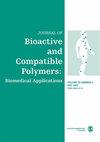A sunscreen nanoparticles polymer based on prolonged period of protection
IF 2.2
4区 生物学
Q3 BIOTECHNOLOGY & APPLIED MICROBIOLOGY
引用次数: 12
Abstract
UV rays are one of the most dangerous factors that harm the skin. There is continuous improvement in getting an effective sunscreen that protects the skin from excessive exposure to UV rays. Typically, phenylbenzimidazole-5-sulfonic acid (PBSA) is used as a sun blocking agent, but its disadvantage is that it can photodegrade and cause cell damage. In our work, PBSA was encapsulated in niosomes nanoparticles then coated with chitosan-aloe vera (CS-nio-aloe/PBSA) to form a carrier polymer with novel and potent properties. This polymer controls PBSA release and epidermal penetration. Characterization of CS-nio-aloe/PBSA polymer nanoparticles through transmission electron microscopy (TEM), scanning electron microscopy (SEM), Fourier transform infrared (FTIR) spectroscopy, and dynamic light scattering (DLS). The carrier polymer release rate was studied in vitro and epidermal permeability to coated PBSA was assessed using mouse skin. The nanoparticle polymer containing sunscreen was effectively prepared with an encapsulation efficiency of 80%. The formulation (CS-nio-aloe/PBSA) was completely deposited on the surface of the skin. This supports its use to protect the skin, and its nanostructures stimulate the release of PBSA for a longer period. Encapsulation of PBSA in CS-nio-aloe nanoparticles could allow for further cellular preservation, UV protection, control of free PBSA, and limited penetration through the mouse skin epidermis.一种基于延长保护期的纳米粒子聚合物防晒霜
紫外线是伤害皮肤最危险的因素之一。在获得有效的防晒霜保护皮肤免受过度暴露于紫外线方面有不断的改进。通常,苯并咪唑-5-磺酸(PBSA)被用作防晒剂,但它的缺点是它可以光降解并造成细胞损伤。在我们的工作中,PBSA被包裹在纳米粒中,然后被壳聚糖-芦荟(cs -nio-芦荟/PBSA)包裹,形成一种具有新型和有效性能的载体聚合物。这种聚合物控制PBSA的释放和表皮渗透。通过透射电子显微镜(TEM)、扫描电子显微镜(SEM)、傅里叶变换红外光谱(FTIR)和动态光散射(DLS)表征cs -ni -芦荟/PBSA聚合物纳米颗粒。体外研究了载体聚合物的释放速度,并在小鼠皮肤上评估了包被PBSA的表皮通透性。有效制备了含防晒剂的纳米聚合物,包封率达80%。制剂(cs -nio-芦荟/PBSA)完全沉积在皮肤表面。这支持其用于保护皮肤,其纳米结构刺激PBSA的释放更长时间。将PBSA包封在cs -ni -芦荟纳米颗粒中,可以进一步保存细胞,保护紫外线,控制游离PBSA,并限制其通过小鼠皮肤表皮的渗透。
本文章由计算机程序翻译,如有差异,请以英文原文为准。
求助全文
约1分钟内获得全文
求助全文
来源期刊

Journal of Bioactive and Compatible Polymers
工程技术-材料科学:生物材料
CiteScore
3.50
自引率
0.00%
发文量
27
审稿时长
2 months
期刊介绍:
The use and importance of biomedical polymers, especially in pharmacology, is growing rapidly. The Journal of Bioactive and Compatible Polymers is a fully peer-reviewed scholarly journal that provides biomedical polymer scientists and researchers with new information on important advances in this field. Examples of specific areas of interest to the journal include: polymeric drugs and drug design; polymeric functionalization and structures related to biological activity or compatibility; natural polymer modification to achieve specific biological activity or compatibility; enzyme modelling by polymers; membranes for biological use; liposome stabilization and cell modeling. This journal is a member of the Committee on Publication Ethics (COPE).
 求助内容:
求助内容: 应助结果提醒方式:
应助结果提醒方式:


